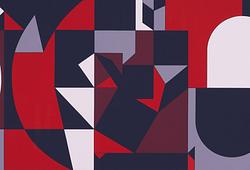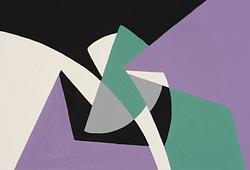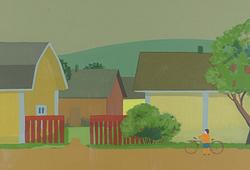Richard Bergh
"Cypresser"
Executed 1897 in Florence. Watercolour, image 32 x 16 cm.
Alkuperä - Provenienssi
Private Collection, Sweden.
Thence by descent to the present owner.
Näyttelyt
Nationalmuseum, Stockholm, "Minnesutställning av Richard Berghs efterlämnade arbeten", May - June 1919, cat. no 100 (titled 'Cypresser' (in the background sunlit Florence).
Prins Eugens Waldemarsudde, "Richard Bergh", October - December 1978, cat. no 30.
Aguélimuseet i Sala, Sweden, "Richard Bergh", 19 May - 30 July 1995, cat. no 43.
Kirjallisuus
"Richard Bergh - ett konstnärskall", Hans Henrik Brummer (ed), Prins Eugens Waldemarsudde och Carlssons Bokförlag, Stockholm, 2002, mentioned p. 67, illustrated p. 72.
Muut tiedot
Richard Bergh, together with his friend Prince Eugen joined the artists' colony in Florence during the autumn and spring of 1897-98. Hans Henrik Brummer has written about this period in Florence, Bergh's landscape painting, and the specific painting "Cypresser" in the catalogue for the exhibition at Waldemarsudde in 2002:
"In 'Cypresser', he wanted to depict the strict trees against the villa's gate, which Bergh saw as the gate to paradise, in the strong sunlight. The air-enshrouded gate to paradise was reached by the cypresses, which shot up towards the sky from the base of the cliffs. Through the contrast between shadow and dazzling sunlight, between hard wall surfaces and the softer landscape, he captured a piece of Florentine nature on the canvas. He used the entire colour scheme as a means of contrast. The wall's warm colour tones in red and pink enhance the coolness of the shadowed areas. The focus on the subject is evident through the simple synthesising form and the thin layers of paint. The simplification, which was part of Bergh's newly gained insights, must be seen against the background of the impressions he received from the art of Botticelli and Fra Angelico."








































